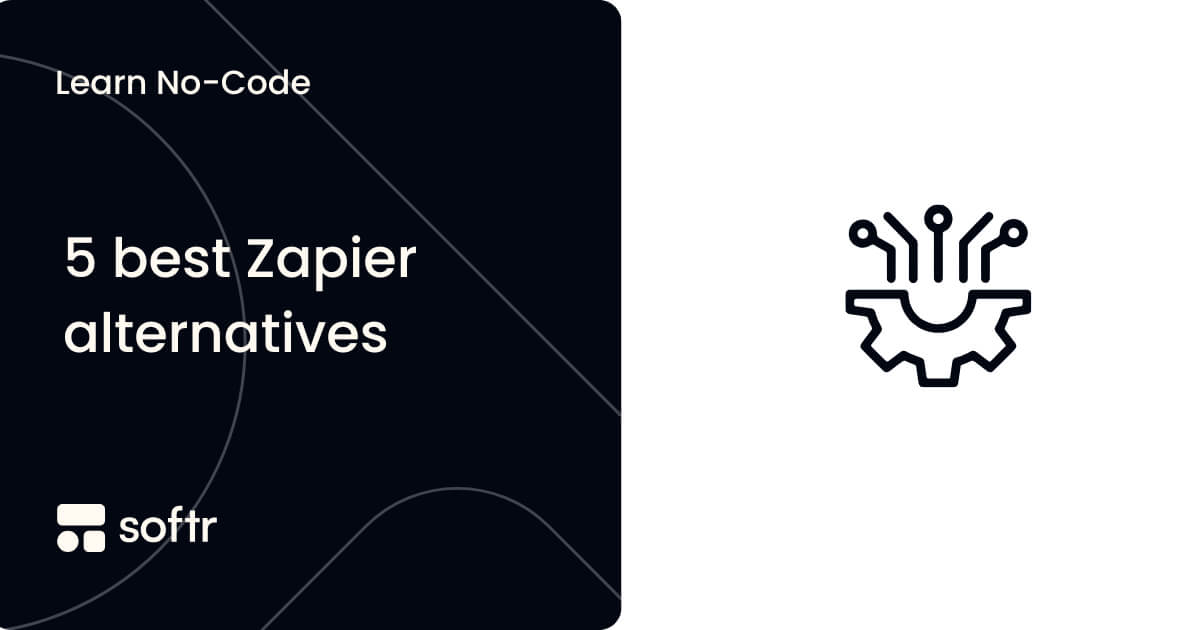PWA vs. native apps: pros, cons and how to pick the best option

When building a mobile app or web application, one of the first decisions you'll face is the type of app you want to create: a native app or a progressive web app (PWA)?
This distinction will shape your web app development approach, how much it’ll cost, developing your business case, and your MVP.
With so many factors to consider—like whether to use a professional development agency or build it yourself—it’s easy to feel overwhelmed.
In this article, we'll cover the pros and cons of native apps and progressive web apps, the differences, and which type of app is the best fit for your business goals.
Keep reading to learn more!
What is a native app?
A native app is a type of application built for a particular platform. Users download these apps through the Apple App Store or Google Play Store, and they take full advantage of a device’s hardware and operating system features, such as the phone’s camera or geolocalization.

Native mobile apps became popular when the iPhone came out. Some of us still might remember the iconic iPhone 3 “There’s an App For That” 2009 commercial.
Instagram, Airbnb, and Uber Eats are examples of applications designed specifically for their respective platforms.

Let’s take a look at some of the pros and cons of native apps:
Pros of native apps:
- Great user experience (UX) and immersive user interface (UI).
- Better performance compared to other app types, thanks to optimized use of device features.
- Provides access to specific device features built into the operating system.
- Looks polished and professional, adding to your credibility.
- Supports push notifications to drive user engagement.
Cons of native apps:
- High development costs and resource requirements.
- Reliance on app stores for approval, updates, and user acquisition.
- Designed for a specific platform, so you must build separate apps for iOS and Android.
- Difficult to stand out in a saturated Google Play Store or Apple App Store marketplace.
Native apps provide high-performing, feature-rich apps with a great user experience.
But they're difficult to build due to platform-specific coding and design and rely on app stores you have no control over. What if Apple decides to ban your app from the App Store?
What is a PWA?
A PWA (Progressive Web App) is a type of application that requires minimal installation and can be delivered through the web using technologies like HTML, CSS, or JavaScript.
Unlike native applications, PWAs aren't tied to a specific platform—they run directly in a web browser and don’t require users to visit an app store to download and install them.
PWAs can work on any device with a browser—as desktop and mobile apps.

PWAs are an accessible and cost-effective alternative to native apps. Companies like Spotify, Starbucks, and Uber use PWAs to deliver faster load times, better accessibility, and improved performance in regions with limited internet connections.
But, as with any type of app, there are advantages and disadvantages.
Pros of PWAs
- Straightforward installation process: users don't have to go through the Apple App Store or Google Play Store.
- Cheaper to develop and maintain compared to native apps.
- Can do most of what a native app can do.
- Accessible to a wide audience without being limited to a specific operating system.
- PWAs can rank in search engine results and attract organic traffic.
- Many PWAs offer offline capabilities using technologies like service workers.
Cons of PWAs
- Limited functionalities on some mobile operating systems.
- Slower performance than a native app for complex tasks.
- Without being listed in an app store, PWAs may lack the same level of user trust and credibility as native apps.
Progressive web applications have been an answer to the decline of native apps, whose download and retention rates have steadily decreased.
Related: 10+ PWA examples in 2024 to inspire you to build yours
PWAs vs. native: understanding the differences
Your choice between native apps and progressive web apps will depend on your business goals, user needs, and app development requirements.
Let’s compare to help you decide.
1. Cost and development time
Developing a progressive web app typically involves lower development costs and less development time since you only need to create one version that works across all platforms. They're a great choice for startups or businesses with limited resources.
Native app development is more expensive and time-consuming. You’ll need to build separate apps for each platform using their unique programming languages and frameworks like React Native.
2. Performance and functionality
PWAs can’t fully match the speed and hardware capabilities of native apps. Features like advanced security features or real-time GPS tracking can be limited in PWAs.
Native apps are optimized for their operating system. They can access device-specific features like the camera, geolocation, or Bluetooth, offering a more immersive user experience.
3. Accessibility
PWAs are highly accessible and work seamlessly on any device with a web browser.
Native apps rely on app stores like the Apple App Store or Google Play Store for distribution and require users to download and install them.
4. SEO and discoverability
Since PWAs function as a web application, they can be indexed by search engines, allowing them to rank in search results and reach a wider audience.
Search engines do not index native apps, so users typically discover them through app stores or marketing efforts.
5. Notifications and user engagement
PWAs can send push notifications through a browser, but these notifications depend on the user’s browser settings.
Native apps offer push notification capabilities for more granular control over how and when notifications are sent, which can improve user engagement.
Learn more about the top PWA software and its features, use cases, benefits, and more.
How to build a PWA in minutes with Softr
Creating a progressive web app (PWA) may sound technical, but with Softr’s intuitive platform, it’s simple and fast. Softr’s no-code tools allow you to create and customize your PWA to meet your business goals—no coding skills required.

From a developer’s perspective, Softr’s intuitive WYSIWYG editor allows you to build a PWA app in minutes using blocks and connectors like you would a Lego construction.
From a user’s perspective, they can “install” the app on their mobile or desktop device and open it through their browser.

The entire process only takes a few steps in Softr.
- Enable the PWA option in your project settings.
- Name your PWA, which will appear on users' devices.
- Upload a custom icon to represent your app on home screens or browsers.
- Set the background color.
- Decide on the floating button position.
And that’s pretty much it!
In just a few simple steps, you’ll have a fully functional PWA that users can install on their devices with all the parameters you’ve previously set.
Ready to build your own PWA? Visit our support page for more details on how to get started, or explore Softr’s no-code platform to see what’s possible.
Conclusion
Figuring out whether a native app or a progressive web app is the best fit for you depends on your business model and user needs. While native apps were the norm ten years ago, PWAs are cost-effective, quick to build and easy to maintain.
If you’re on the fence about spending time and money on building a native app, why not start with a PWA? With Softr’s no-code tools, you can quickly create a progressive web app to test your ideas and gather feedback—without the need for a big budget or complex development process.
Take a look at some of these web app ideas for some inspiration, and join our Softr community to discuss!
Frequently Asked Questions
Is a PWA better than native apps?
PWAs are better for teams and companies looking to:
- Build and develop apps quickly and cost-effectively.
- Easily develop, maintain, and distribute.
- Rank in search engine results and attract organic traffic.
Native apps are better for businesses that need:
- Advanced hardware integrations.
- Credibility through marketplaces like the Apple App Store or Google Play Store.
- Creating a polished, platform-specific experience.
Can PWA replace native apps?
PWAs can replace native apps in some cases but can't fully match their performance, offline functionality, or device integration. PWAs are ideal for businesses with more straightforward app development needs like content delivery or e-commerce.
More complex apps, such as games or secure financial transactions, typically require the advanced features provided by native mobile apps.
What's the difference between PWA and traditional apps?
- PWAs are browser-based and can be accessed directly via a web browser.
- PWAs are SEO-friendly, work across all devices, and require less development time and cost.
- Traditional apps, including native apps, are downloaded from an app store like the Apple App Store or Google Play Store.
- Native apps are built for a specific platform and integrate with the operating system for advanced functionality.








